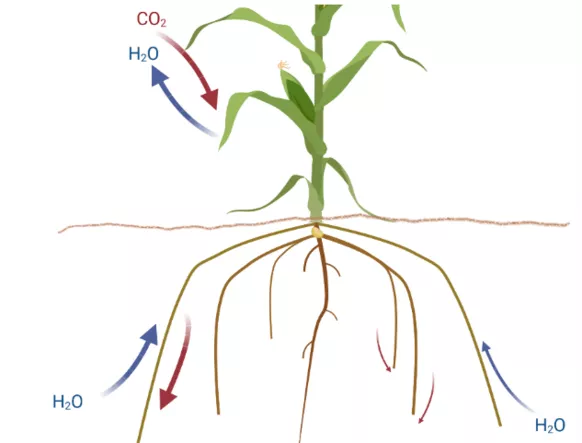How do plants regulate their root growth and root hydraulic architecture development under varying soil conditions?

Responsible: Ruth Adamczewski
Contact: ruth.adamczewski(at)tum.de
In the study of the soil-plant-atmosphere continuum (SPAC), it is widely acknowledged that the water cycle and carbon cycle are intricately linked. As water flows through the plant, it moves along a gradient of water potentials, starting from the soil and eventually being released from the leaves into the atmosphere. In parallel, the plant absorbs carbon dioxide through the process of photosynthesis, converting it into different structures such as sugars, starch, and biomass, which are then allocated within the plant. However, the question remains: how does the plant determine where to allocate these resources?
One crucial factor is the root system, which is composed of different root types that emerge during the plant's development. As water and nutrients are vital for plant growth, in well-watered conditions, plants tend to invest in roots with high hydraulic conductance to enhance their uptake of water and nutrients. Conversely, in drier environments, the large xylem vessels in high-conductivity roots tend to cavitate quickly, making them less effective at transporting water and nutrients. In these conditions, plants should invest in more but less conductive roots to compensate.
To investigate this root growth behavior in maize plants, we propose an experiment where the plants are grown under contrasting conditions, and their root growth is monitored. Using growth rates as a background reference, we will examine root cross-sections to study the root anatomy and vessel diameters. This will allow us to better understand how plants allocate resources to their roots in response to varying water availability and inform future efforts to improve crop resilience in changing climates.